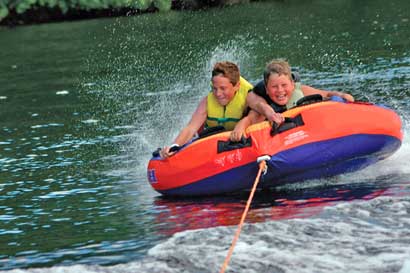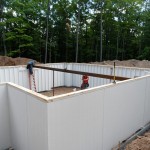 The quality of our lakes and streams in Northern Wisconsin and the Upper Peninsula is ultimately a reflection of how we take care of our land. Waterfront property owners, inland residents, recreational users, agricultural producers and other businesses all can play a positive role in maintaining and improving the water quality of our lakes and streams.
The quality of our lakes and streams in Northern Wisconsin and the Upper Peninsula is ultimately a reflection of how we take care of our land. Waterfront property owners, inland residents, recreational users, agricultural producers and other businesses all can play a positive role in maintaining and improving the water quality of our lakes and streams.
The state Natural Resource Board unanimously approved changes to minimum statewide shore land zoning rules in early December addressing water runoff including impervious surface regulations and nonconforming structure standards. In addition to providing more flexibility for lakefront owners, state officials say the rules also make the standards more straightforward for counties to implement. The board also extended to May 1, 2016, the deadline for counties to adopt the changes in their ordinances or adopt more protective standards. The rules must now go to the governor and legislative committees for review.
Cut Runoff – Cut the amount of runoff that picks up pollutants and carries them to the waterway by minimizing hard surfaces that create the runoff.
Although Natural Resources Chapter 115 (also known as NR115) of the Wisconsin Administrative Code was revised in 2009 and went into effect February 1, 2010, many counties and zoning administrators expressed concern about implementation and enforcement of the minimum standards regulating impervious surfaces such as rooftops and driveways.
A recent study of over 1,000 waterfront properties found that, when all factors were equal, properties on lakes with cleaner water commanded significantly higher property values. In other words, people prefer clean water and will pay more to live on lakes with better water quality. Take away: What you and your neighbors do to sustain or improve water quality will improve your resale potential and our environment.
The following are CornerStone’s recommendations created for all lakefront property owners to practice good environment stewardship protecting our natural resources. Next time you are at the shoreline, look down at the trees and branches that fall into the water, providing a critical habitat for aquatic organisms that feed fish, turtles, crayfish, and other critters. Additionally, a fallen tree is like a dock for ducks and turtles, as well as serving as a perch for kingfishers, osprey, and songbirds. For every action, there is a reaction, and one must be reminded occasionally of our delicate ecosystem balance that we all enjoy throughout the Northwoods.
Three Shoreline Principles
- Curb Pollutants at their source – fertilizers, household toxins, eroding soils, malfunctioning septic systems.
- Cut Runoff – Cut the amount of runoff that picks up pollutants and carries them to the waterway by minimizing hard surfaces that create the runoff.
- Capture & Cleanse Pollutants – Harness runoff before it reaches the water way with shore land buffers, rain barrels, and rain gardens.
Ten Shoreline Action Words
- Choose ZERO-phosphorous fertilizer.
- Properly dispose of household hazardous wastes.
- Minimize erosion.
- Inspect and maintain your septic system regularly.
- Reduce hard surfaces like rooftops and driveways on your property.
- Plant trees and shrubs or protected wood areas.
- Direct downspouts onto your lawn and landscaping, not hard surfaces.
- Install a rain barrel.
- Build a rain garden.
- Protect and restore your shoreline.




